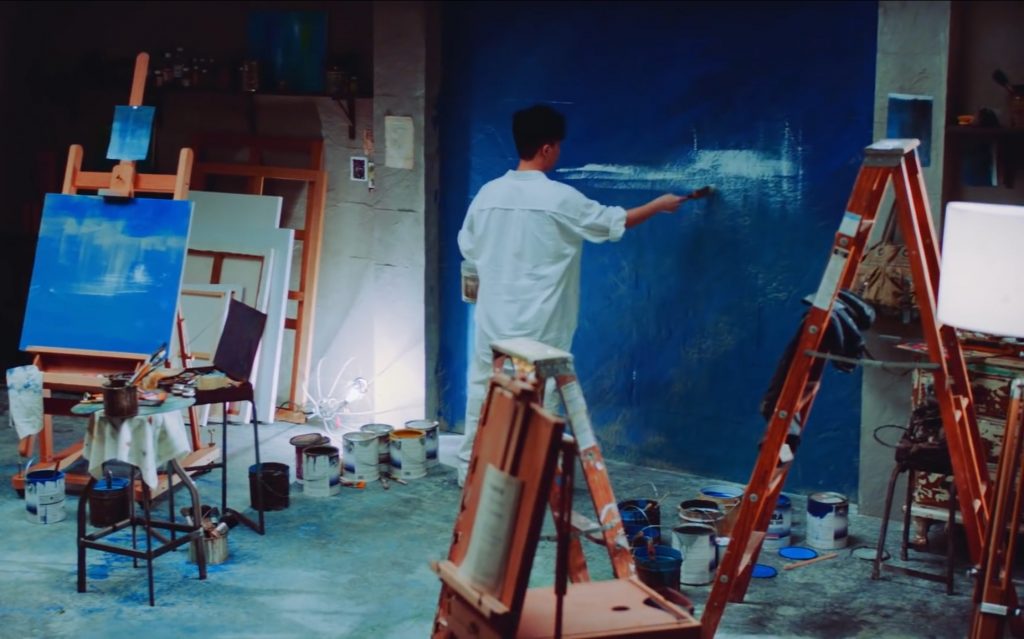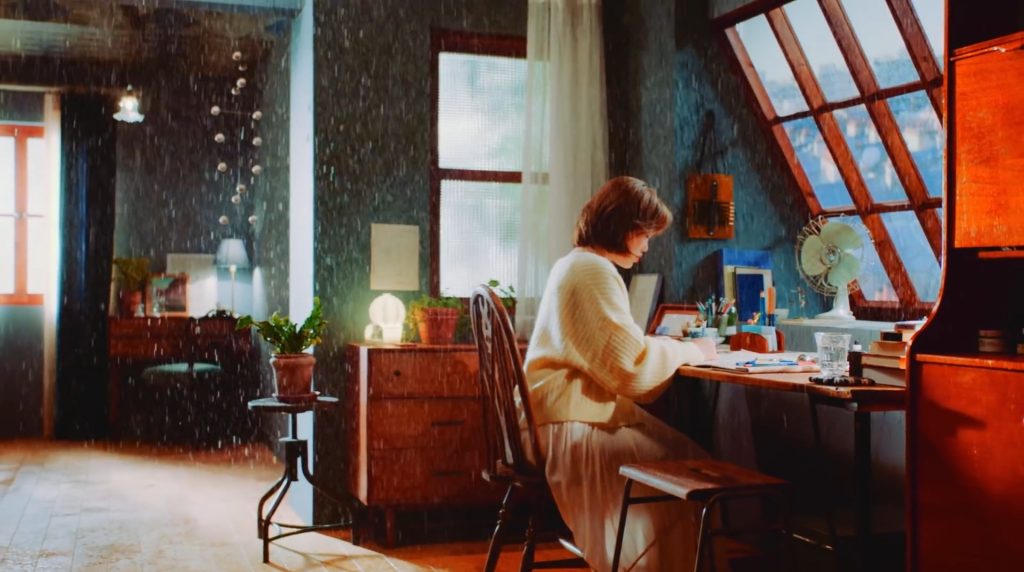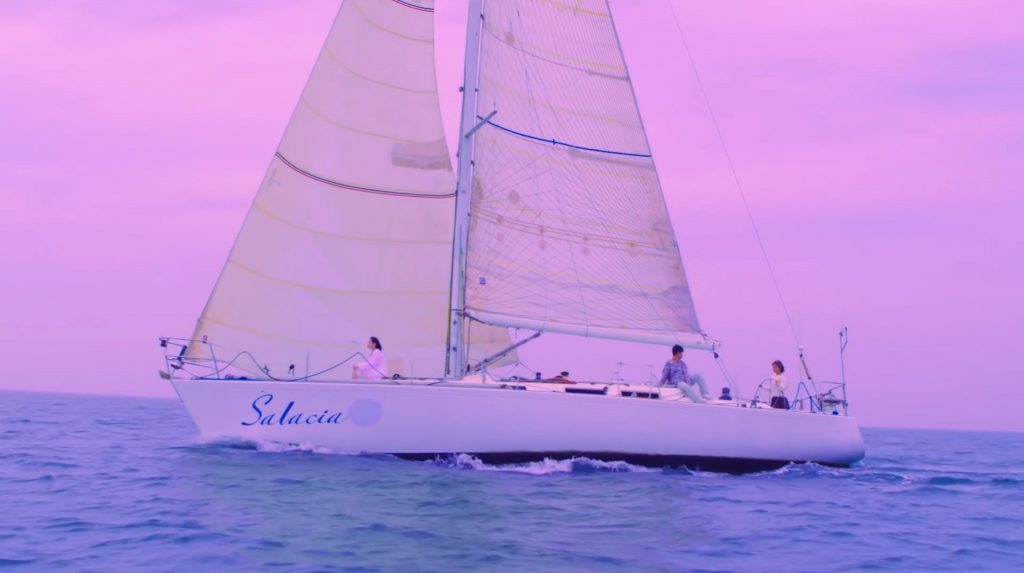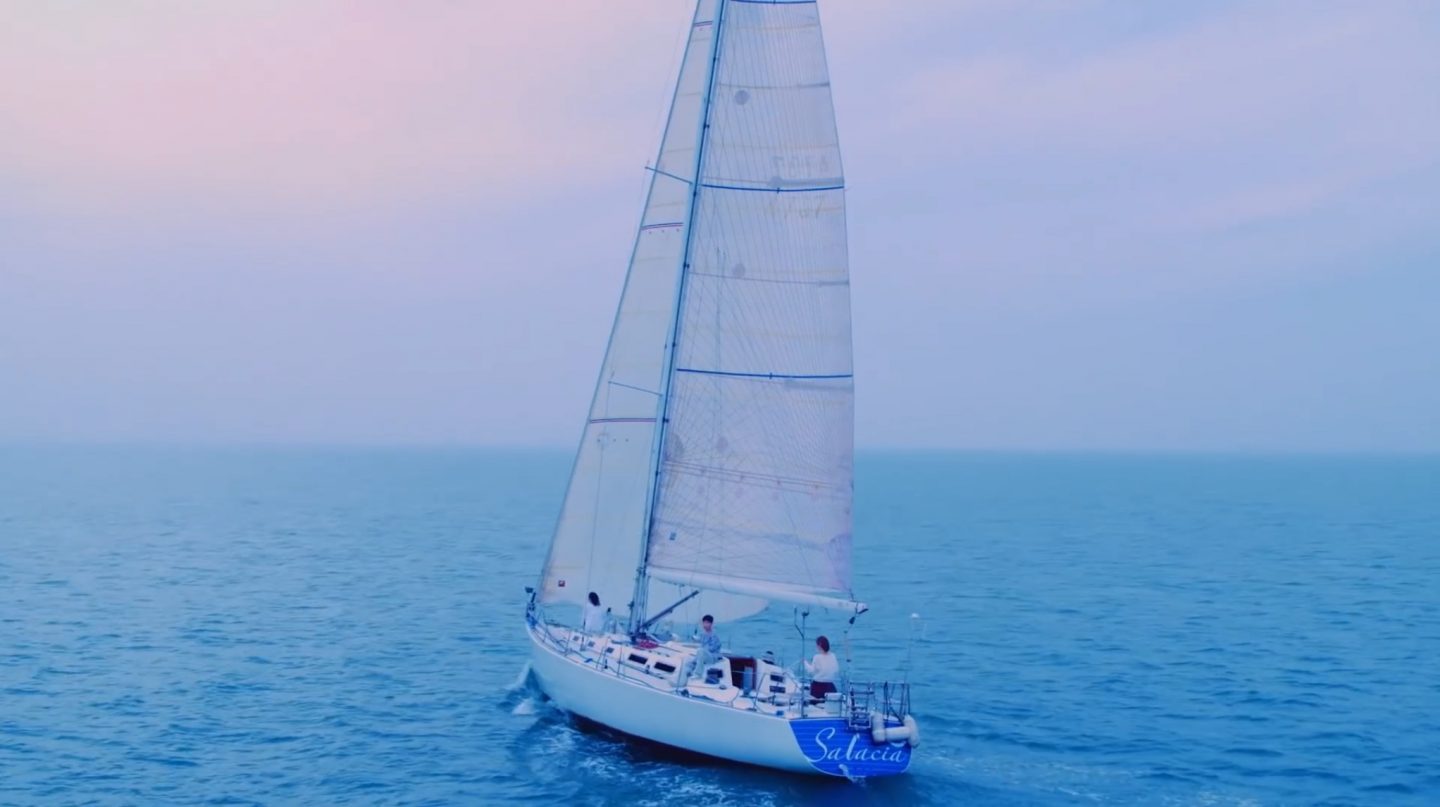Following their 2017 summer release “Dinosaur,” the legendary Indie siblings Akdong Musician have returned with title track “How can I love the heartbreak, you’re the one I love” and their third full album “SAILING.” It is indeed time to hail Lee Chanhyuk and Soohyun’s return to the music scene, following Chanhyuk’s enlistment in the military and YG’s long list of troubles. Having composed and written every song, Chanhyuk (with the help of Soohyun’s arranging for track number nine “Farewell Greetings”) has contributed all of his skills to deliver a more mature, melodic album. The timing couldn’t have been better than the heart of fall, as drifting leaves and colder mornings lead the way for mellower ballads.
The major point of the MV is its use of the color blue to symbolize water, and dually both love and heartbreak. Sticking true to the theme of sailing across the ocean, Chanhyuk is seen painting a huge blue mural, while Soohyun continues writing in her room under a downpour. These scenes alternate with the duo riding a parasail across the sea, sailing atop their distinct love stories. Water is considered a fluid concept, flexible in its depth and symbolism. For example, tears can mean both happiness and hurt, sorrow and an inner cleansing, which are seen at the beginning or end of something meaningful. It seems that AkMu is truly embracing one or more of these ideas as their main theme.

Amidst a blank, white wall and white attire, Chanhyuk paints a mural of the ocean, perhaps as a way of portraying a past love that still remains so deep and vast. Yet, it is clear from his melancholy mood that his mural is a way to keep what is already gone. The ocean — and all it stands for — may stay alive visually, but it can never truly replace the deep love in the greater spectrum. Blue runs everywhere in his studio, and yet Chanhyuk remains frustrated and unsatisfied.
In one way, this scene can reflect the challenge of understanding, accepting, and perhaps even replicating what is seemingly irreplaceable. Or, it can simply reflect the long wait for his “ocean” to dry out, along with his memories. Every step taken closer to the truth may only bring greater hardship, which can be one inspiration behind working so hard on a mural — a lasting symbol of what has, and what could’ve, been.

Meanwhile, Soohyun’s scenes depict a loneliness that can’t be described in any particular shape or form, until the end where her words are symbolized by a sudden downpour. She struggles to write while alone, and this is when the MV shifts to the duo sailing across the ocean — perhaps a fragment of her imagination. After a pause, Soohyun returns back to her desk, unable to escape from her thoughts. But ultimately, clarity is symbolized in the form of a downpour, which may suggest the release of her pent-up anguish at last. In this way, water means both sorrow and freedom.
The analogy of love and the ocean is a beautiful, yet wistful form of imagery that contemplates on the magnitude and sheer impossibility of ever recovering from a breakup. The lyrics compare a deep love to the ocean that must dry before healing can ever take place:
How can I even love the heartbreak,
when you’re the one I love
I can’t give up on us solely because of love
and experience heart-wrenching pain
How could I, to you
our love so deep as the ocean
waiting till it runs dry will be our farewell

Despite the title being long, I believe it’s aptly fit for the song, as the main question lies on accepting heartbreak from a lover. The main battle lies between accepting it on behalf of the lover, or watching out for one’s own heart that is dreading the outcome. Once again, AkMu surprises us all with such a pure yet mature outlook on all things love and life. The rest of their album continues to follow through with the themes of water, love, and last farewells, altogether leaving behind a musical work full of depth and emotions.



